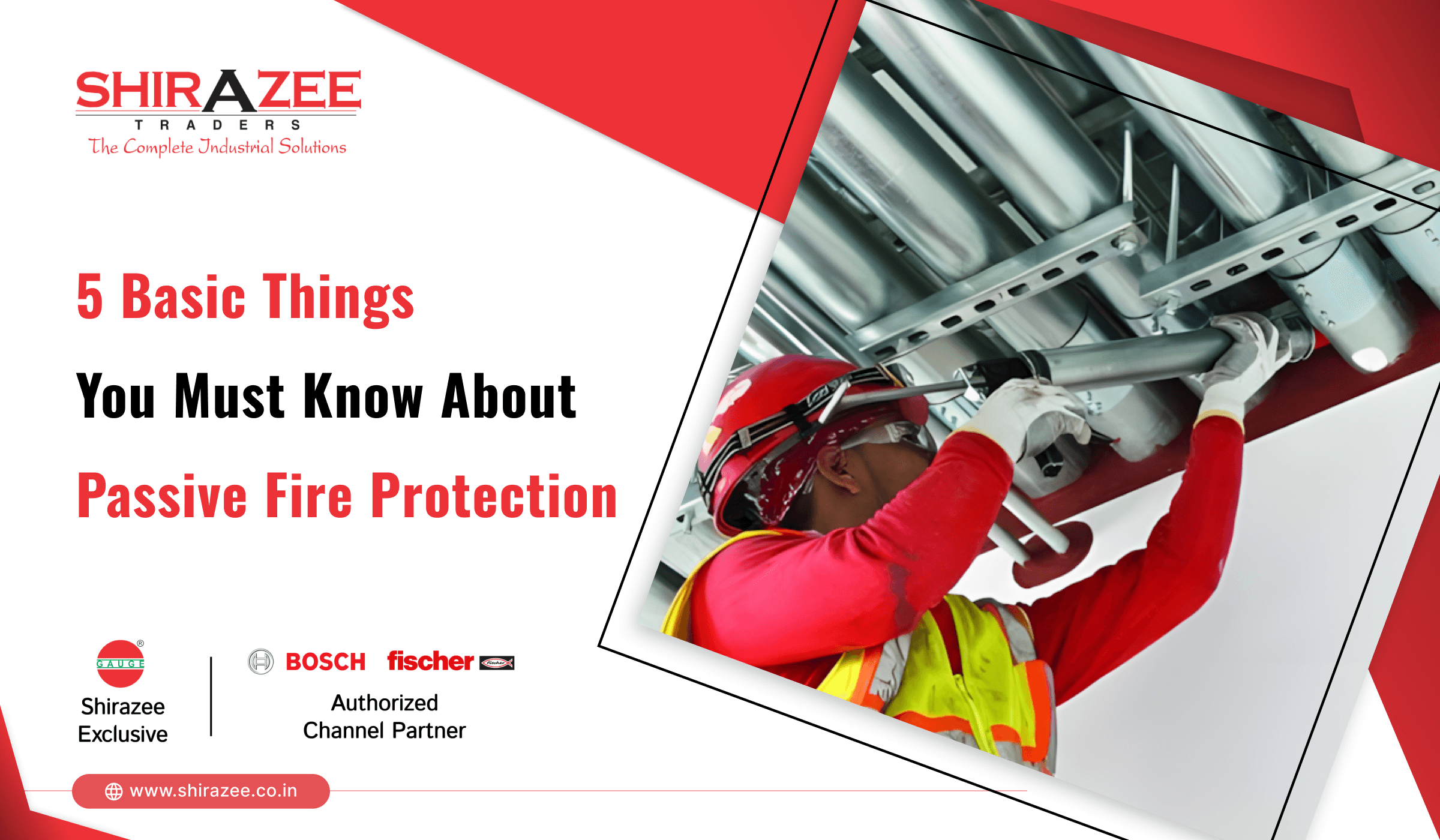
Passive fire protection (PFP) might sound complicated, but it simply means putting things in place that help stop fires from spreading. Unlike alarms or sprinklers, which react when a fire starts, PFP is all about building materials that help contain fires and keep everyone safe. Imagine walls, doors, and other structures that make it harder for fire to travel. That’s what PFP does.
The importance of passive fire protection can’t be overstated. It helps protect lives, keeps buildings standing, and limits damage to property and assets. At Shirazee Traders, we understand how essential passive fire protection systems are in building safety. In this blog, we’ll break down the basics of PFP in five simple points, covering what it is, how it works, and why it matters.
1. Understanding Passive vs. Active Fire Protection
Let’s first explain the distinction between active and passive fire prevention.
The use of structures and materials that aid in fire containment is known as passive fire protection. It simply remains where it is and quietly does its function without moving or reacting. Sprinklers and fire alarms are examples of active fire protection that only turns on when a fire breaks out. These systems attempt to actively extinguish the fire or warn people.
Solutions for passive fire defense operate differently. It generates “fire barriers” by utilizing unique building materials. People may have more time to safely evacuate if these barriers slow down or prevent the fire from spreading. Passive fire prevention is essentially a wall that keeps the fire from spreading.
2. Key Components of Passive Fire Protection
So, what makes up a passive fire protection system? Here are some key parts:
– Fire-Resistant Walls, Floors, and Doors
These are the main parts of any PFP system. Fire-resistant walls, floors, and doors create separate sections, or “compartments,” in a building. If a fire starts in one part, these barriers help keep it from reaching other areas. It’s like building a protective bubble around each room.
– Fire-Rated Sealants and Coatings
Sometimes, fire can sneak through tiny gaps or cracks. That’s where fire-rated sealants and coatings come in. They are applied to walls, floors, and ceilings to seal these openings, so flames can’t pass through as easily. Shirazee Traders offers high-quality sealants and coatings designed to enhance any passive fire protection plan.
– Fire Dampers and Compartmentalization
HVAC systems (heating, ventilation, and air conditioning) run through different parts of buildings. Fire dampers in these systems close automatically when there’s a fire, stopping flames from moving through the air ducts. This “compartmentalization” helps contain the fire to one area, keeping other parts safe.
3. Importance of Fire-Rated Materials and Certifications
Fire-rated materials are essential for effective PFP. These materials are tested to resist fire for a specific amount of time, giving people more time to evacuate and reducing damage.
Certification standards, like UL ratings and NFPA codes, are essential to ensure materials meet safety requirements. At Shirazee Traders, we believe in using only certified products, as these have been tested and approved for safety. Certified materials mean you’re getting protection you can rely on.
4. Regular Maintenance and Inspections
Just like a car needs regular check-ups, passive fire protection systems also need maintenance to stay effective. Routine inspections help ensure everything is in place and working well.
For example, fire doors should be checked to make sure they close correctly, and sealants should be inspected to see if they’re still intact. Maintenance might include adding more fire-rated coatings or sealing any new gaps. Shirazee Traders recommends regular inspections to keep your fire protection system strong and effective.
5. Legal Requirements and Building Codes
In many places, there are laws about passive fire protection. Building codes require certain fire-resistant materials to be used in construction, depending on the type of building.
Shirazee Traders keeps up-to-date with all the latest regulations, so we can help our clients meet these safety standards effectively.
Summing Up!
Passive fire protection helps slow down fires, protects lives, and limits damage. By using fire-resistant materials, ensuring regular maintenance, and following legal codes, we can create safer spaces.
At Shirazee Traders, we’re here to help with high-quality passive fire protection solutions. Whether you’re building something new or want to upgrade your fire safety, reach out to us. Let’s work together to make your spaces safer and better protected against fire.







